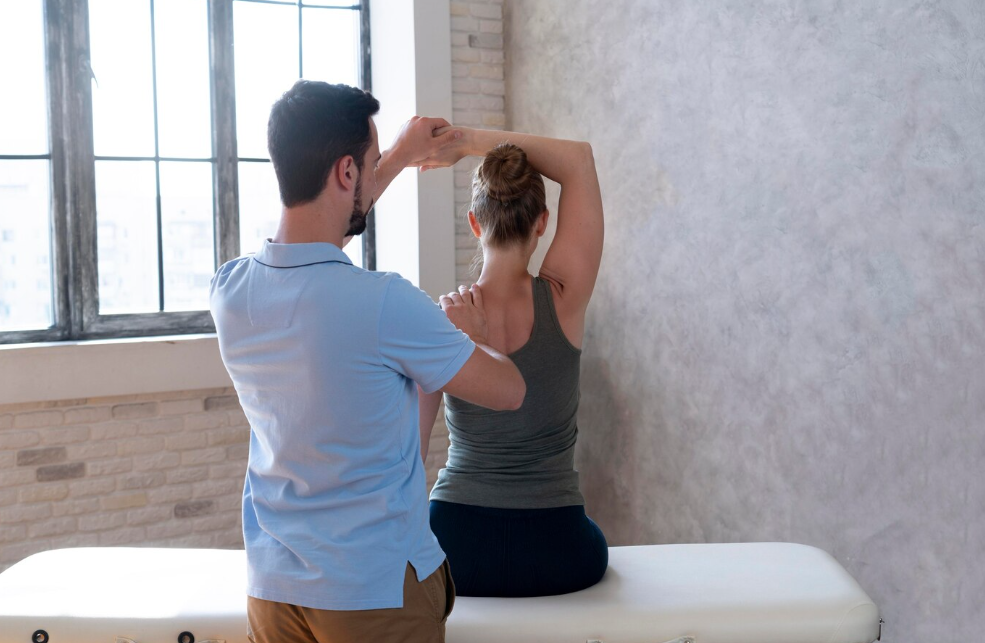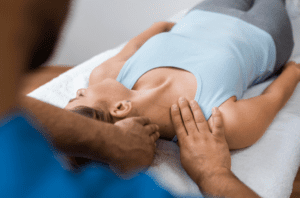Is your body prepared to receive the maximum benefit from massage therapy? A frequently-overlooked yet highly-effective strategy is stretching. Aside from the obvious benefits to your mental and physical health, stretching before a massage may help you relax even more deeply by preparing your muscles to relax even more throughout the treatment. Get the lowdown on why stretching before and after massages may do wonders for your health and flexibility.
An Overview of Massage Therapy
Massage therapy has become a popular alternative medicine for a number of physical and mental disorders. Professionals in North Vancouver massage therapy manipulate the body’s soft tissues to relieve pain, enhance flexibility, and relax. Massage helps cure injuries, chronic pain, anxiety, depression, and more. Professional massage therapists in Vancouver have significant training to ensure safe and effective treatments. Massage treatment may help with a specific ailment or overall health and well-being.
What are the Benefits of Pre-Massage Stretching?
Although stretching and massage therapy are similar in many ways, stretching’s primary advantage is that it helps release and lengthen muscular tension that results from bad posture and repeated motions. The following advantages are enhanced when you stretch in between routine massage appointments.
Additionally, your massage therapist will do their job better. Your muscles will be more easily released from knots and tension, and the body will undergo long-lasting remedial adjustments, as the massage therapist can work faster to reach the deeper layers of your muscles when they are free and flexible.
The Advantages of Stretching in Addition to Getting Regular Massages:
- Enhanced adaptability and movement.
- Minimize the body’s lactic acid buildup since it causes weariness and discomfort in the muscles.
- Minimize the risk of injury and the pressure on your joints and muscles.
- When you engage in an intense activity that extends your tight, non-flexible muscles, like playing tennis, you run the risk of injuring them from the abrupt tensing and stretching.
- Boost your body-mind connection. Improved body awareness can be attained through stretches and massages.
- Align your body to improve your posture.
- The detrimental effects of prolonged desk work can be mitigated by strengthening and lengthening muscles.
- Boost lymphatic and blood flow.
- Stretching and releasing the muscles can help heal and prevent tightness and discomfort in the muscles.
- Boost balance and muscular coordination.
- By activating the parasympathetic nervous system, massage relaxes the body and mind to reduce stress and anxiety.
- It also breaks down adhesions, increases blood circulation, increases the temperature of soft tissues, and decreases tone. All of these mechanisms work together to relieve tension.
- Scar tissue and edema can be lessened with massage.
- Massage speeds up the healing of muscles.
- Serotonin levels are raised by massage, which enhances mood and sleep.
How to Incorporate Stretching into Your Massage Session?
As massage therapists in Vancouver, we know how important stretching is. Stretching improves the benefits of massage, lowers muscle tension, and promotes flexibility. During a massage, gentle stretches can improve range of motion, promote relaxation, and make your clients feel refreshed. We can offer you the knowledge and techniques to help your clients get the most out of their massages because, as skilled massage therapists, we understand how important stretching is to every massage session.
Also read: Massage Therapy for Mental Wellness: Revitalizing Mind and Body
What Should You Avoid When Stretching Before a Massage?
Before getting a massage, stretching can be a great way to prepare your muscles and ease any tension. However, it’s important to know what stretches to avoid in order to prevent injury and ensure a relaxing experience.
Massage therapy experts suggest avoiding any stretches that are too vigorous or intense, as these can strain the muscles and make it harder for the massage therapist to work on them effectively. Rather, use easy stretches that help the body become more flexible without straining it.
It’s also a good idea to let your massage therapist know in advance about any especially sensitive or tight regions of your body so they can make customized recommendations for stretching and make sure your session is both safe and pleasurable.
As massage therapists, we place a high priority on our patients’ health and wellness and want them to walk out of our sessions feeling renewed and invigorated.
Also read: 10 Types of Therapeutic Massage and the Health Benefits of Massage Therapy
Tips for Getting the Most Out of Your Massage Therapy Sessions with Pre-Stretching
To enhance massage treatment advantages, pre-stretching is recommended. Before your massage, stretch to relax, supple, and open your muscles to the massage therapist. Massage treatment professionals advocate this approach to boost massage results and decrease damage.
Many massage therapists are skilled in specific stretching techniques for your requirements and physical constraints. Working with a trained massage therapist and pre-stretching may alter your massage experience.
Conclusion
Overall, stretching before a massage improves its efficacy. Pre-massaging stretching might enhance your relaxation or chronic pain relief. Remember that each person is different, so some stretches may work better than others. Contact one of our skilled massage therapists at Spa Utopia, hotel with spa, to learn more about stretches and how to employ them during your massage therapy session. With their guidance, you may maximize therapeutic massages and achieve your health goals.
FAQs
1. Why is stretching important before and after a massage?
Stretching helps warm up your muscles before a massage, making them more receptive to the therapy. Afterward, it promotes muscle relaxation and enhances the benefits of the massage.
2. Can stretching improve flexibility and range of motion?
Yes, regular stretching can improve flexibility and increase your range of motion. When combined with massage therapy, it can help release tension and tightness in muscles, enhancing overall mobility.
3. Does stretching help prevent muscle soreness after a massage?
Yes, stretching after a massage can help reduce muscle soreness by increasing blood flow and promoting the removal of waste products. It aids in the recovery process and minimizes post-massage discomfort.
4. Can stretching complement the pain-relieving effects of massage therapy?
Absolutely! Stretching can complement the pain-relieving effects of massage therapy by targeting specific areas of tension or discomfort. It can help alleviate chronic pain and promote long-term relief.
5. Is it necessary to consult a professional for stretching guidance?
While basic stretches can be done on your own, consulting a professional, such as a physical therapist or a certified trainer, can provide personalized stretching guidance tailored to your needs and goals.





